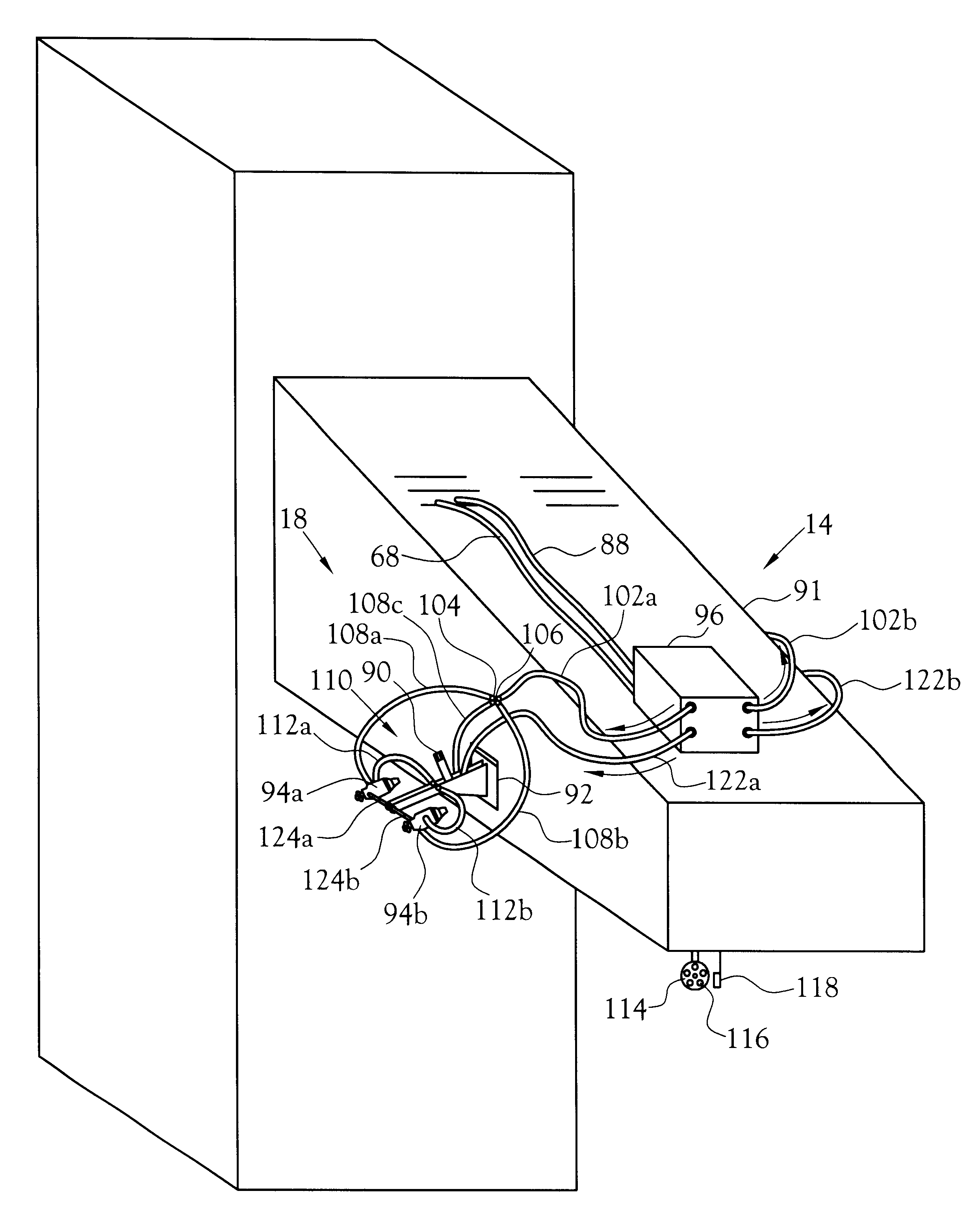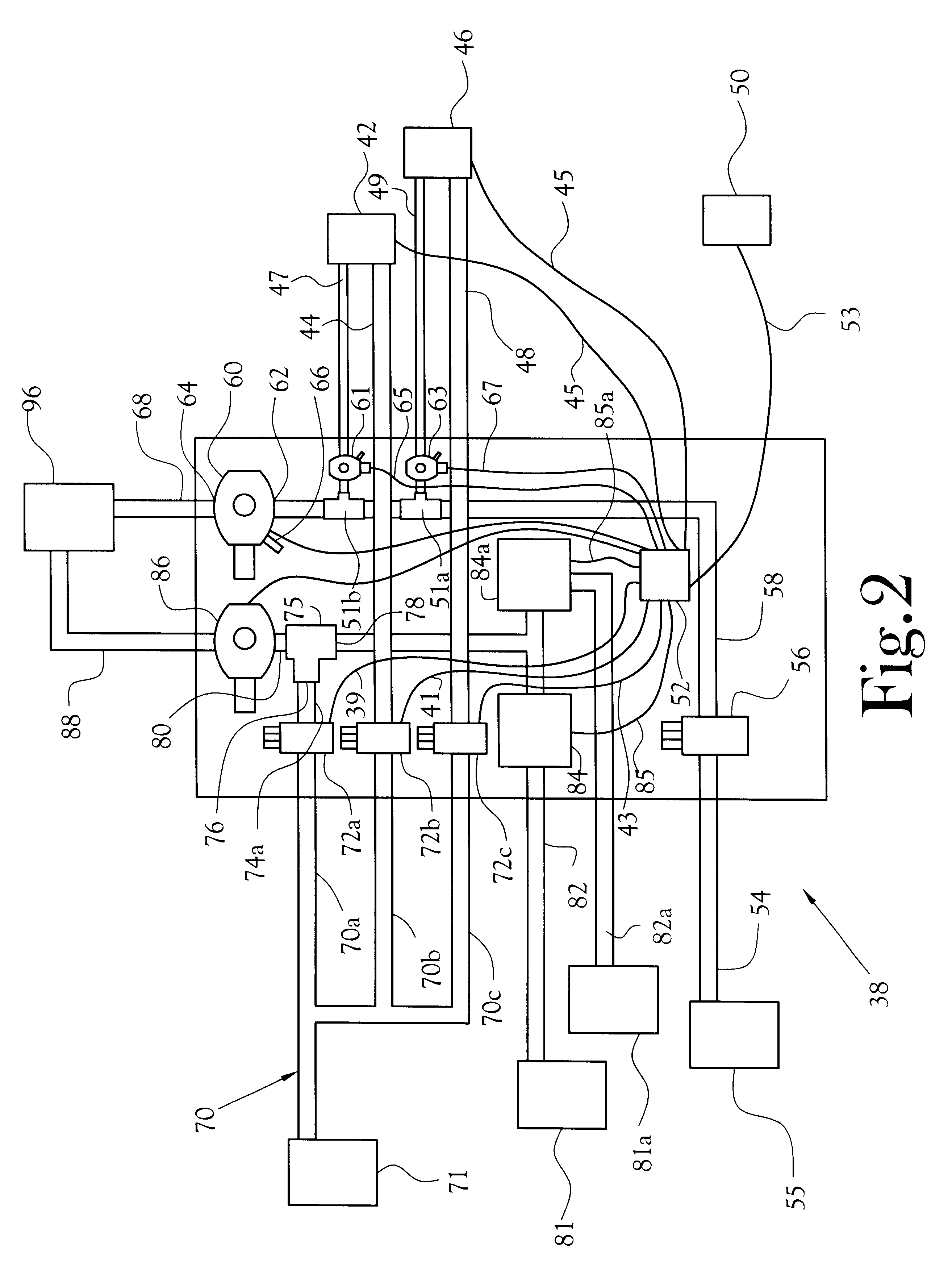Method and apparatus for conditioning textile fibers
- Summary
- Abstract
- Description
- Claims
- Application Information
AI Technical Summary
Benefits of technology
Problems solved by technology
Method used
Image
Examples
Embodiment Construction
For purposes of clarity, the present description of the invention, at times, refers specifically to cotton fibers. Whereas the present invention is especially useful for processing cotton fibers, it will be recognized by one skilled in the art that the present invention may be employed when processing other fibers.
A schematic drawing of a textile mill incorporating a system in accordance with the present invention is shown in FIG. 1. In a typical cotton textile mill, a plurality of open cotton bales 10 are aligned under the path of a reciprocating take-off device 14. This row of bales is often referred to as a laydown 12. The take-off 14 includes a vacuum hood 16 that is cantilevered over the bales and withdraws fibers from the bales 10 as it passes over the bales in a reciprocating path. Fibers are withdrawn from each bale on each pass of the hood 16 over the bales, irrespective of direction of travel of the hood. On each of two opposing sides of the take-off 14 is at least one spr...
PUM
| Property | Measurement | Unit |
|---|---|---|
| Length | aaaaa | aaaaa |
| Flow rate | aaaaa | aaaaa |
| Content | aaaaa | aaaaa |
Abstract
Description
Claims
Application Information
 Login to View More
Login to View More - R&D
- Intellectual Property
- Life Sciences
- Materials
- Tech Scout
- Unparalleled Data Quality
- Higher Quality Content
- 60% Fewer Hallucinations
Browse by: Latest US Patents, China's latest patents, Technical Efficacy Thesaurus, Application Domain, Technology Topic, Popular Technical Reports.
© 2025 PatSnap. All rights reserved.Legal|Privacy policy|Modern Slavery Act Transparency Statement|Sitemap|About US| Contact US: help@patsnap.com



